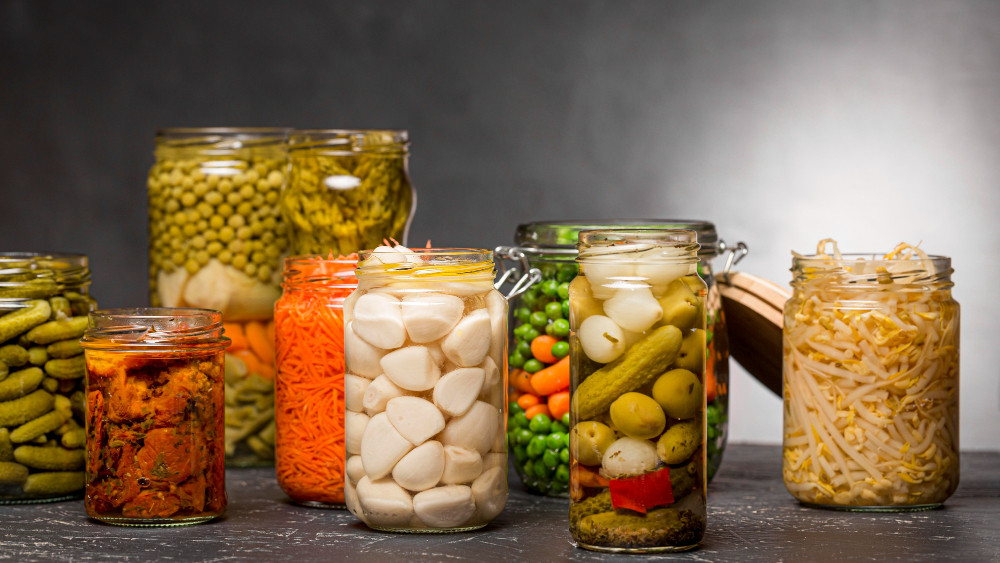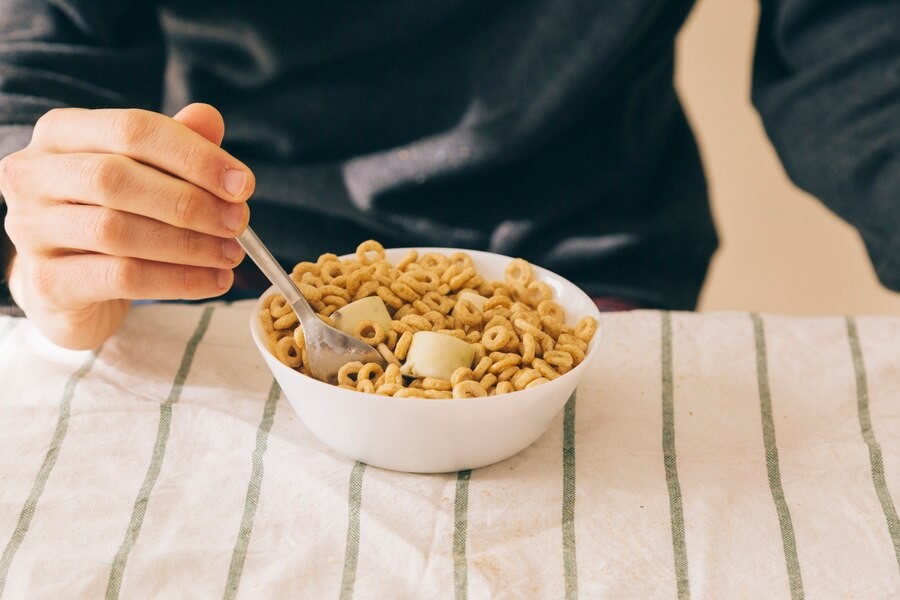Mendengar istilah bahan pengawet dalam makanan mungkin membuat Anda waspada akan kesehatan tubuh. Seperti namanya, bahan pengawet digunakan untuk mengawetkan makanan atau membuat makanan tahan lebih lama dan tidak mudah basi. Jika digunakan dalam takaran yang wajar, bahan pengawet tidak berbahaya bagi kesehatan.
Jenis-Jenis Bahan Pengawet Makanan
Teknik mengawetkan makanan telah dikenal sejak ribuan tahun silam. Kebutuhan mengawetkan makanan berawal dari kebutuhan mengawetkan hasil panen atau hasil berburu agar tidak cepat rusak dan bisa dikonsumsi lebih lama.
Bahan pengawet makanan bisa terbagi menjadi dua, yaitu:
- Pengawet alami menggunakan madu, buah-buahan, ekstrak tanaman, minyak esensial, chitosan
- Pengawet buatan, termasuk di dalamnya nitrat dan nitrit, sulfit, asam benzoat, asam sorbat
Berikut penjelasannya:
Asam benzoat dan sodium benzoat
Asam benzoat merupakan pengawet buatan yang telah lama digunakan dan banyak digunakan di berbagai produk seperti buah-buahan dan bumbu. Penggunaan asam benzoat dan sodium benzoat biasanya dijumpai pada produk jus buah dan acar. Penggunaan bahan pengawet ini dapat mencegah pertumbuhan mikroba dan menguatkan rasa makanan atau minuman.
Sodium benzoat merupakan bahan pengawet berbentuk bubuk kristal tidak berbau yang merupakan gabungan antara asam benzoat dan natrium hidroksida. Sementara asam benzoat adalah pengawet yang memiliki sifat antibakteri.
Penggunaan sodium benzoat sering dikaitkan dengan beberapa masalah kesehatan seperti penyakit kulit, gangguan pencernaan, dan hepatitis. Pada beberapa orang, zat pengawet ini juga dapat menyebabkan reaksi alergi seperti gatal, bengkak, iritasi kulit dan pruritus.
Baca Juga: Benarkah MSG Berbahaya? Kenali Risiko dan Dosis Amannya
Asam sorbat
FDA memasukkan asam sorbat sebagai bahan pengawet yang aman dan dapat ditambahkan langsung ke dalam makanan. Asam sorbat memiliki sifat antibakteri, serta dapat mengendalikan jamur dan ragi.
Beberapa makanan yang menggunakan asam sorbat sebagai pengawet antara lain margarin, saus, dan ikan asap. Sebagai pengawet makanan, asam dorbat dapat menimbulkan beberapa reaksi alergi ringan seperti gatal-gatal.
Sulfit
Sulfur dioksida atau sulfit adalah pengawet makanan yang bertujuan membuat makanan tetap segar dan mencegah perubahan warna kecoklatan pada buah atau makanan.
Pada tahun 1970 penggunaan sulfit banyak dijumpai pada buah segar dan sayuran, namun tahun 1986 FDA mengeluarkan larangan penggunaan sulfit untuk buah segar dan sayuran karena dapat menimbulkan masalah kesehatan bagi pengidap asma. Saat ini sulfit banyak digunakan sebagai pengawet pada buah kering, daging olahan, dan aneka makanan panggang.
Baca Juga: MSG Vs Garam, Lebih Sehat yang Mana?
Nitrat dan nitrit
Nitrat dan nitrit merupakan bahan pengawet yang biasa diberikan untuk mencegah perubahan warna pada makanan. Pengawet ini banyak digunakan pada olahan daging sehingga daging menampilkan warna merah yang menarik.
Tanpa penggunaan nitrin dan nitrat, daging olahan akan berwarna pucat atau kecoklatan. Selain pada olahan daging seperti sosis, nitrat dan nitrit banyak dijumpai secara alami pada beberapa jenis sayuran.
Pada makanan yang mengandung nitrat dan nitrit sebaiknya tidak dimasak dalam suhu terlalu tinggi karena dapat menyebabkan pembentukan nitrosamin yang bersifat karsinogenik.
Gula dan garam
Penggunaan gula dan garam pada proses pengawetan makanan berfungsi untuk meningkatkan tekanan osmotik, yang menghentikan aliran air. Proses ini membantu mengurangi kandungan air dari makanan, menghancurkan beberapa bakteri dan memperlambat proses pembusukan. Di sisi lain, penambahan gula dan garam juga dapat meningkatkan rasa.
Penggunaan gula dan garam berlebihan sebagai pengawet dapat memicu beberapa masalah kesehatan seperti tekanan darah tinggi, masalah jantung, diabetes, penyakit ginjal, dan peningkatan risiko kanker.
Pengawetan makanan bertujuan agar makanan segar bisa dikonsumsi lebih lama dan tidak mudah busuk. Bahan-bahan yang digunakan sebagai bahan pengawet umumnya aman dikonsumsi dalam jumlah tertentu.
Namun jika Anda mengalami reaksi alergi atau masalah kesehatan setelah mengonsumsi makanan yang mengandung bahan pengawet, sebaiknya periksakan ke dokter. Anda juga bisa memanfaatkan fitur konsultasi yang tersedia pada aplikasi Ai Care yang bisa diunduh di ponsel.
Mau tahu informasi seputar nutrisi, makanan dan tips diet lainnya? Cek di sini, ya!
- dr Nadia Opmalina
Dhakal, P. (2022). Food Preservation- Chemical Preservatives with Types, Examples. Available from: https://microbenotes.com/chemical-preservatives-food-preservation-types-examples/
WebMD. (2022). What Are Natural Preservatives?. Available from: https://www.webmd.com/diet/what-are-natural-preservatives
Livestrong. Are the 10 Most Common Food Preservatives Safe to Eat?. Available from: https://www.livestrong.com/article/288335-the-most-common-food-preservatives/
Chintapalli, S. (2022). What Is Sorbic Acid?. Available from: https://www.medicinenet.com/what_is_sorbic_acid/article.htm
Seed, S. (2024). What You Should Know about Sodium Benzoate, Available from: https://www.webmd.com/diet/what-to-know-about-sodium-benzoate
Grundy, K. (2019). The Health Risks of Sulfur Dioxide in Dried Fruits. Available from: https://www.livestrong.com/article/317156-the-health-risks-of-sulfur-dioxide-in-dried-fruits/
GUnnars, K. (2020). Are Nitrates and Nitrites in Foods Harmful?. Available from: https://www.healthline.com/nutrition/are-nitrates-and-nitrites-harmful












